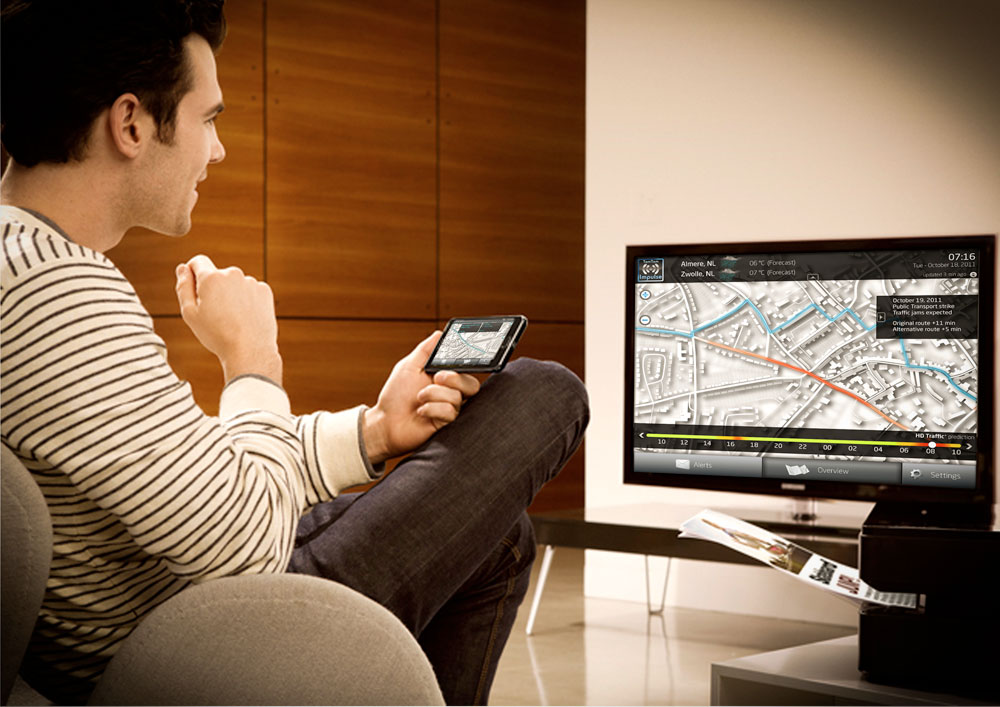On their daily drudge to the office, suburbanites seldom get lost. But they do get stuck along the way. Their travel pattern demands another type of navigation information.
Regular travellers have very little need of a navigation device once they know their favourite routes, and the occasional by-ways. The information that they do need, they gather while starting the day. Television and radio provide information on the weather and traffic situation. Dedicated websites show the degree of congestion on the ring roads in colour codes. And yet: commuters often end up stuck in traffic jams because the information they collected was not timely, specific or relevant enough.
Here is a new market for navigation giant, Tomtom, MSc student Danish Ahmed (Industrial Design Engineering) believes. He conducted research to capture the hidden needs of commuters: information that is timely and relevant, the desire to keep moving, mutual trust and a streamlined day.
Ahmed realised that there had to be an information shift from that given during the ride, and that prior to it. “A substantial opportunity exists for new solutions in the prior to travel phase,” Ahmed writes.
The service Ahmed conceptualises is App-based. He named it ‘Tomtom Impulse’ because, just like the impulse in physics, the Impulse App should arouse movement. Once user preferences on home and work locations have been entered, the Impulse can provide personal notifications on road works, existing traffic jams and adverse weather conditions along the route: timely and specific information, that is.
Following an interim presentation at Tomtom, someone in attendance commented: “We have all the data, but we don’t manage to provide it personally.” Ahmed agrees that in principle all required data is available, and he also thinks that the information technology called ‘server push’ should be feasible. The only thing that is not so common is web-based television, which can show the traffic info at large.
Next Friday, Ahmed will present his thesis at Tomtom. He then hopes to hear whether or not the navigation giant aims to develop these special services for daily travellers.
Danish Ahmed, ‘Creating the drive; a new concept solution for commuters’, 15 Sept 2011. Thesis supervisor: Dr. C.M. Cardoso
“Li Bai is a poet who lived during Tang Dynasty in the 8th century AD. I love his poems. Longing for a free and easy life, Li made his home wherever he was. Sometimes I feel I have been pursuing a similar life attitude since I left my hometown at age 16 to go to the university, which was located 2000 kilometres away. I also love the painting ‘Li Bai strolling and chanting a poem’, painted by Liang Kai during the 13th century AD (Southern Song Dynasty). With the fewest lines, Liang captured the soul of Li Bai.
I hope all my readers have fun when they see the nano-copy I made of this painting. We already have too much to be serious about. For this image I used ion-beam-induced deposition (ibid) technology. I entered a data file of the painting in the machine. I didn’t actually paint the copy myself. It’s has only been possible since quite recently to make such high resolution images with ibid-machines.”
Ping Chen, ‘Three-dimensional nanostructures fabricated by ion-beam-induced deposition’. Thesis defense: 6 October 2010, Professor Huub Salemink (Applied Sciences).



Comments are closed.